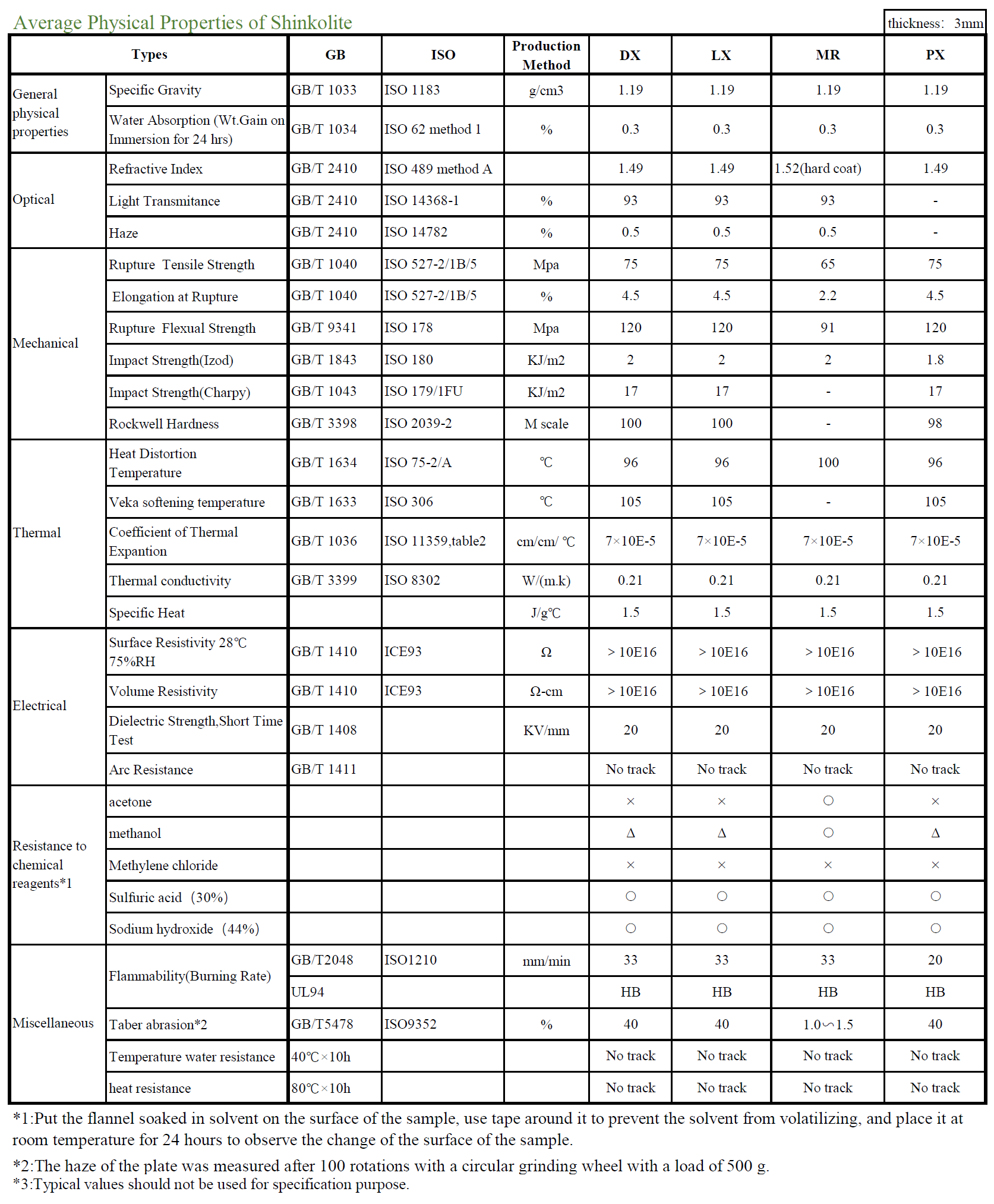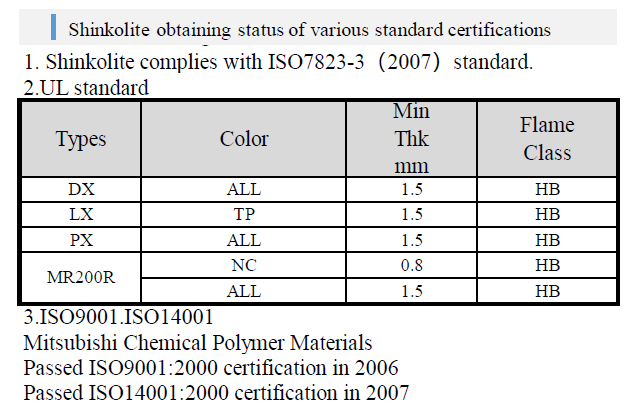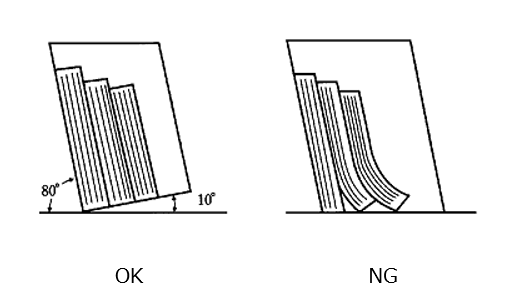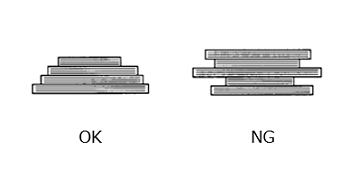Average Physical Properties of Shinkolite


Handling and storage
SHINKOLITE, as a thermoplastic sheet, requires precautions to avoid mechanical, chemical and thermal damage during its handling and storage as detailed below
- Exposure to heat
SHINKOLITE tends to deform under high temperature. It should be stored in an area whose ambient temperature does not exceed 50 C.
- Mechanical damage
SHINKOLITE has relatively high surface hardness, comparable to aluminum. However, care should be taken not to have the surface scratched during handling. Both surfaces of SHINKOLITE are protected with masking film or paper. It is recommended not to remove the making until necessary to prevent dust collection and accidental surface scoring or scratching.
- Dust collection
In case the unmasked surface of SHINKOLITE is rubbed strongly with dry cloth or the like to remove dust or stain on the surface, then static charge may build up to collect even more dust on the surface. Use of dampened cloth is recommended to wipe it with, if necessary, to minimize static build-up.
- Thermal expansion
SHINKOLITE has a fairly large coefficient of thermal expansion. Thermal dimensional changes should be taken into account in processing and storing it. For example, an increase or decrease by 20C in the sheet temperature causes 1.4 mm of linear expansion or shrinkage per 1,000 mm in length of the sheet.
- Water absorption
Humidity also causes dimensional changes of SHINKOLITE. Though such changes by humidity is not as great as thermal ones, humidity condition should be carefully watched. Water absorption, if excessive, may lead to bubbling during thermoforming or crazing after printing or painting. It is therefore recommended that storage and working areas should be air-conditioned.
- Solvent attack
SHINKOLITE can be attacked by organic solvents resulting in micro cracks formed in the sheet surface. It should be avoided to store SHINKOLITE in such an area as may be exposed to solvent vapors.
- Combustion characteristics
SHINKOLITE is not highly flammable, but burns when exposed to naked fire.
- Storage positioning
SHINKOLITE can be placed either horizontally or vertically, when stored. The sheet can warp depending on the way it is stored. Either of the following is recommended.
Standing
Stand SHINKOLITE on the rack with bottom inclined at 10-degree angle. (See Figure A.) Place the sheets tight to each other. It is recommended to keep the total thickness of a cluster of sheets within 30 cm.

Stacking Stack the sheets flat. In case sheets of different sizes are stacked, avoid an overhang with the smaller size sheet always placed on top of the larger ones. (See Figure B.) Also the total height of a stack should not exceed 50 cm. A stack consisting of the same size of sheets is much preferred.



